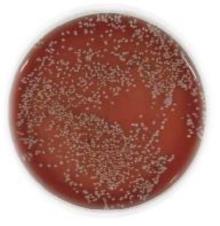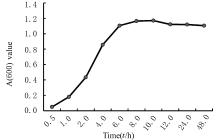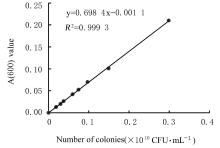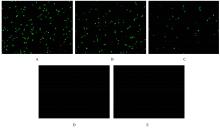吉林大学学报(医学版) ›› 2023, Vol. 49 ›› Issue (1): 131-138.doi: 10.13481/j.1671-587X.20230117
• 基础研究 • 上一篇
粪肠球菌在体外细胞模型和乳鼠轮状病毒感染模型中对轮状病毒SA11株复制的抑制作用
刘洋,于美玲,程美慧,刘长城,贾雪娇,刘梦琦,李永刚,赵微( )
)
- 锦州医科大学基础医学院病原生物学实验室,辽宁 锦州 121000
Inhibitory effect of Enterococcus faecalis on rotavirus SA11 strain replication in in vitro cell model and suckling rat rotavirus infection model
Yang LIU,Meiling YU,Meihui CHENG,Changcheng LIU,Xuejiao JIA,Mengqi LIU,Yonggang LI,Wei ZHAO( )
)
- Laboratory of Pathogenic Biology,School of Basic Medical Sciences,Jinzhou Medical University,Jinzhou 121000,China
摘要:
目的 探讨加入粪肠球菌后轮状病毒SA11株在体内和体外的复制情况,为阐明粪肠球菌影响轮状病毒感染提供依据。 方法 体外实验,将108~1012 CFU·mL-1粪肠球菌进行10倍浓度梯度稀释,与Caco-2细胞共培养12、18、24、30和48 h,同时设对照组(Caco-2细胞感染轮状病毒后不加入粪肠球菌),采用CCK-8法检测不同浓度粪肠球菌作用后各组Caco-2细胞存活率;感染复数(MIO)值为0.1的轮状病毒作用于Caco-2细胞1 h后加入108~1012 CFU·mL-1粪肠球菌培养18 h,同时设对照组,实时荧光定量PCR(RT-qPCR)法检测各组Caco-2细胞中轮状病毒VP6基因拷贝数,免疫荧光灶法检测各组Caco-2细胞中轮状病毒滴度。体内实验,采用18窝4~5日龄SPF级昆明系乳鼠,相同窝数随机分为对照组、抗生素处理组和粪肠球菌移植组,抗生素处理组和粪肠球菌移植组乳鼠先用四联抗生素灌胃3 d耗竭其肠道菌群,然后3组乳鼠开始每日灌胃107 FFU·mL-1轮状病毒100 μL,持续8 d,粪肠球菌移植组乳鼠在灌胃病毒同时灌胃1010 CFU·mL-1粪肠球菌100 μL,收取病毒感染第2、4、6和8天各组乳鼠粪便,RT-qPCR法检测各组乳鼠粪便中轮状病毒拷贝数。 结果 体外实验, CCK-8法检测,与对照组比较,不同浓度粪肠球菌作用48 h内各组Caco-2细胞存活率均有不同程度升高,表明粪肠球菌在该浓度范围内对Caco-2细胞无毒性;RT-qPCR法检测,与对照组比较,1010、1011和1012 CFU·mL-1粪肠球菌组Caco-2细胞中轮状病毒VP6基因拷贝数分别降低了75.8%、99.9%和99.9%(P<0.05);免疫荧光灶法检测,与对照组比较,108、1010和1012 CFU·mL-1粪肠球菌组Caco-2细胞中轮状病毒滴度分别降低13%、77%和100%(P<0.05)。体内实验,与对照组比较,粪肠球菌移植组乳鼠粪便中病毒基因拷贝数明显减少(P<0.05)。 结论 在体外细胞模型和乳鼠感染轮状病毒模型中粪肠球菌对轮状病毒的复制均发挥抑制作用。
中图分类号:
- R373.2










